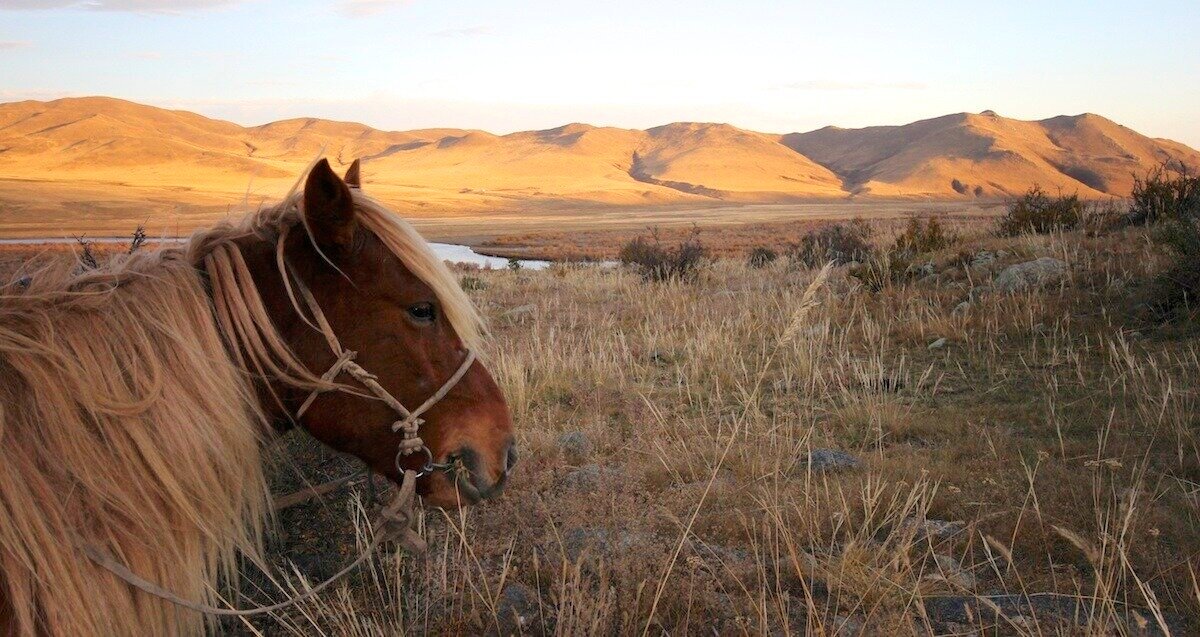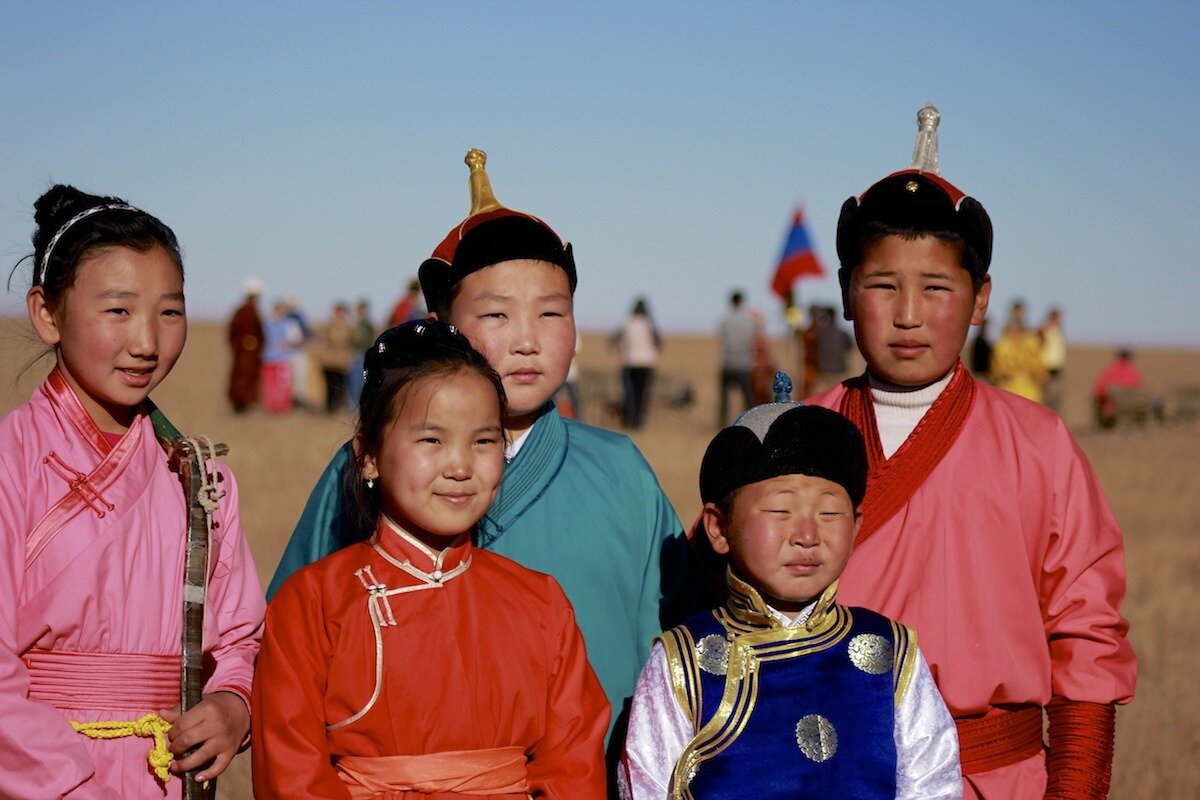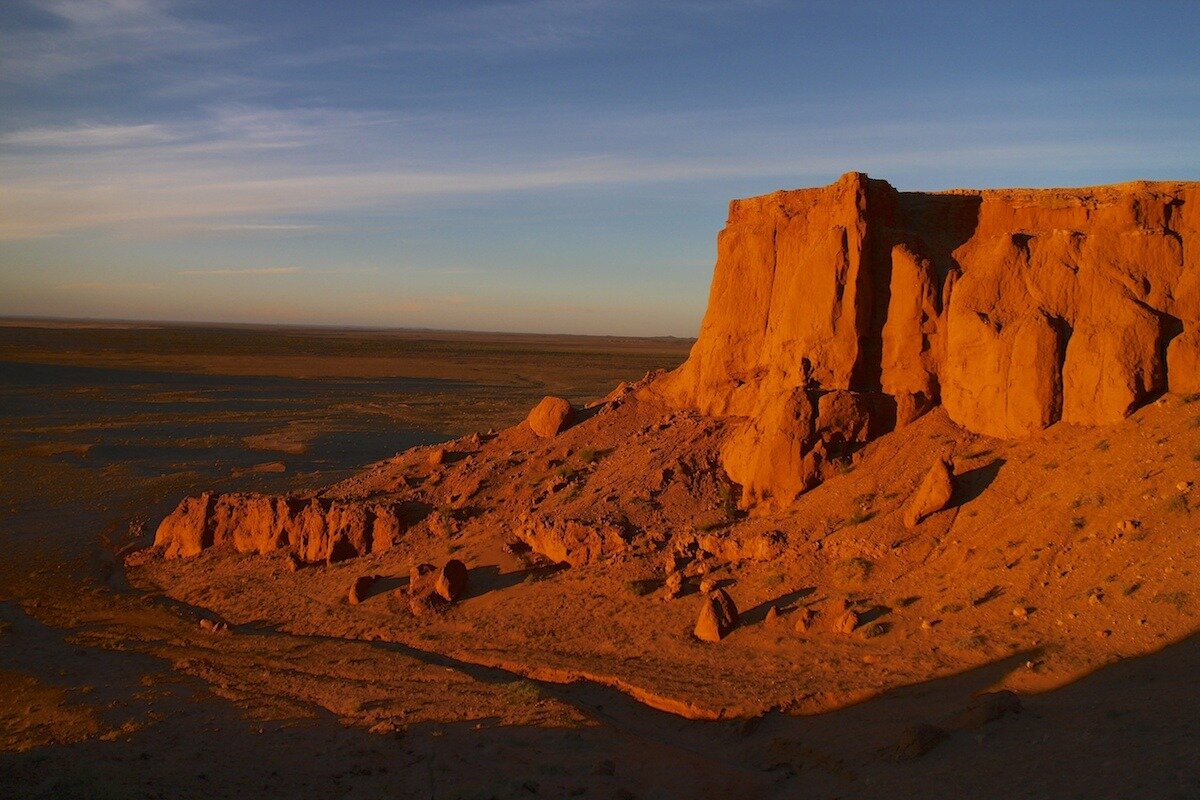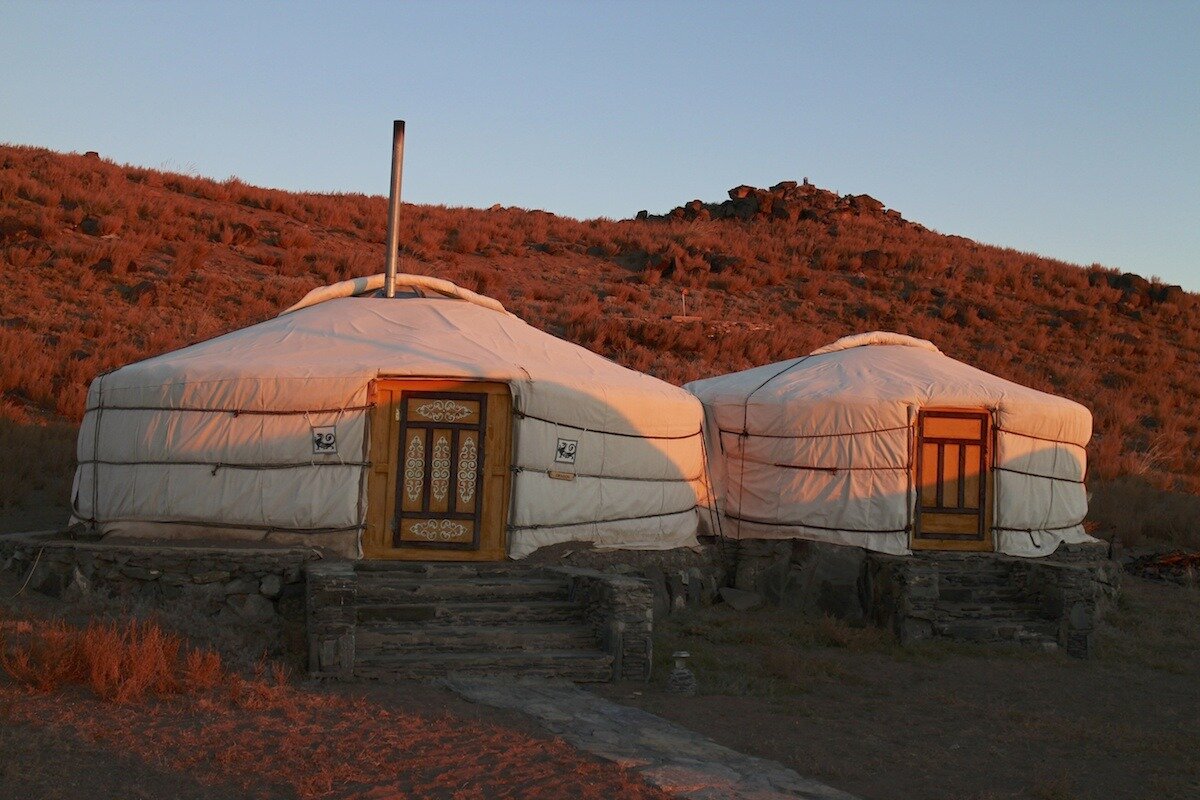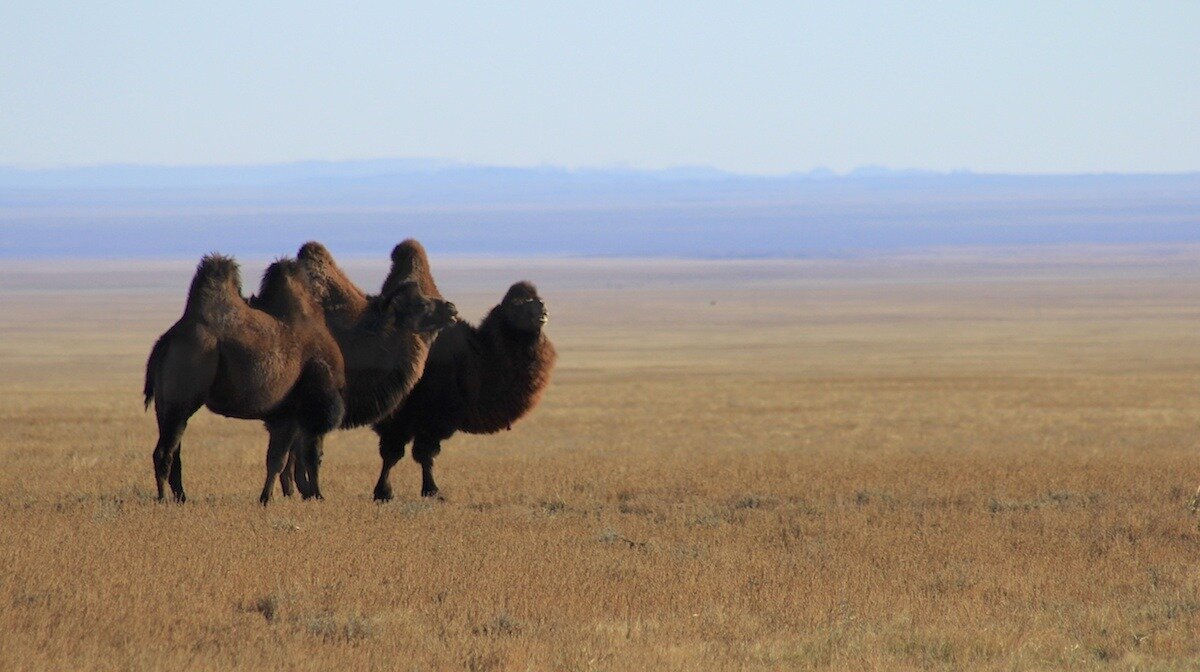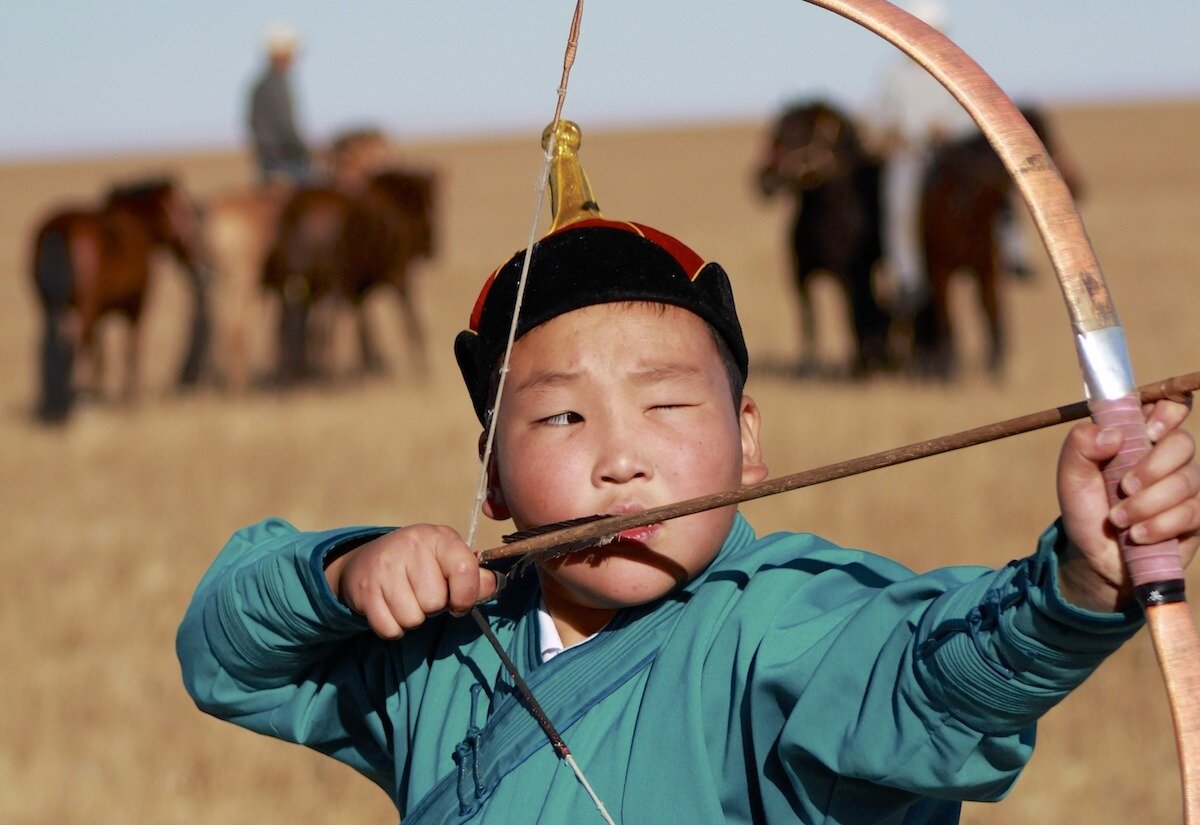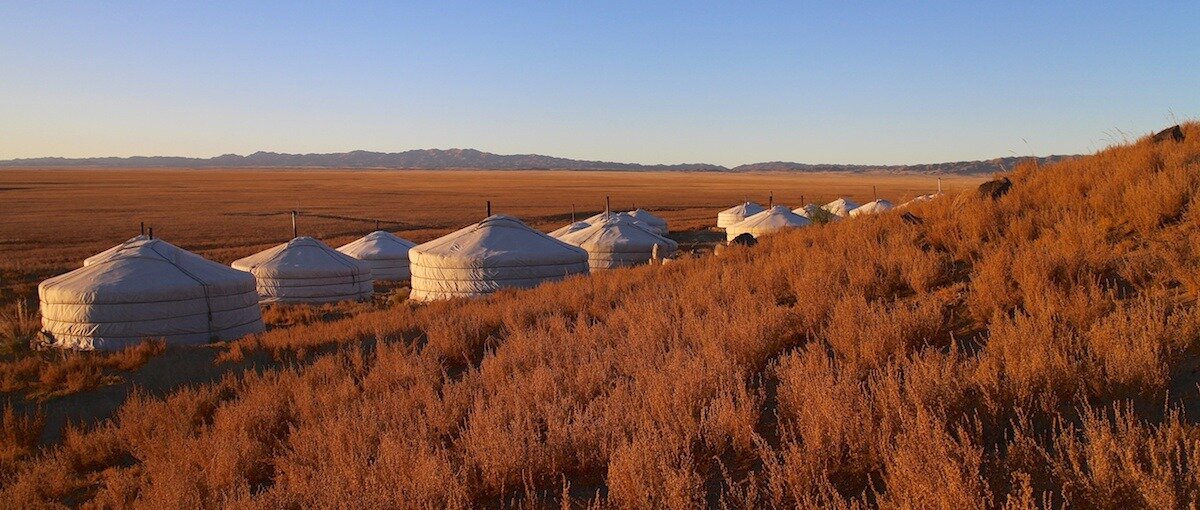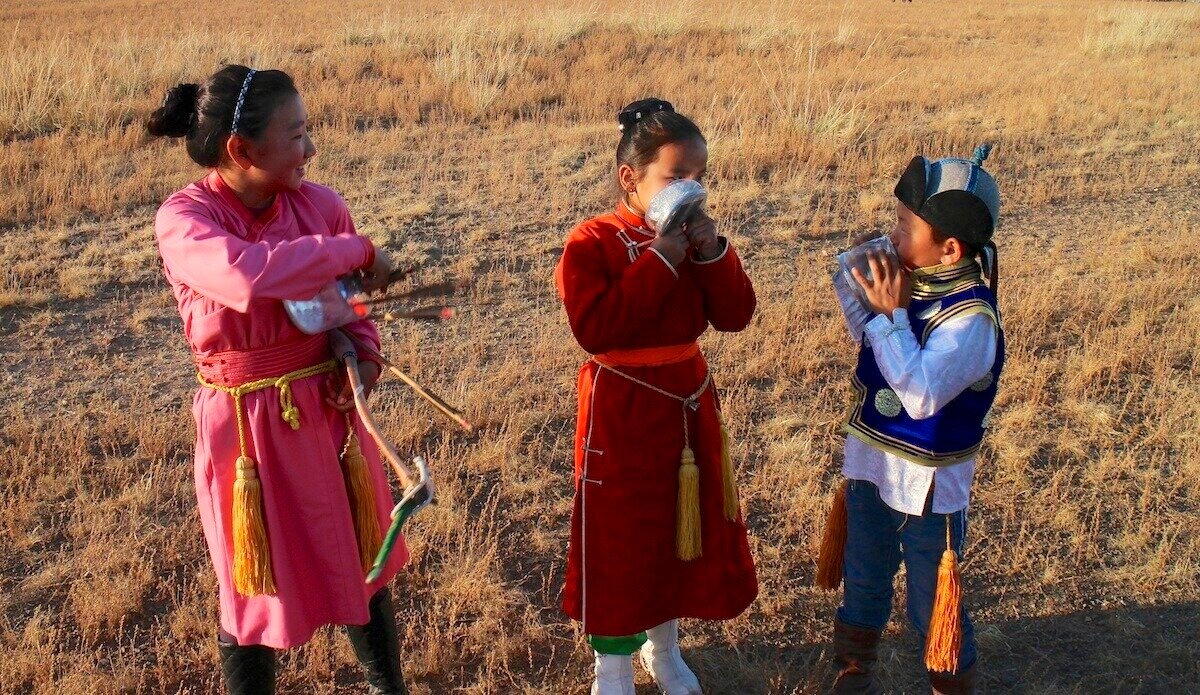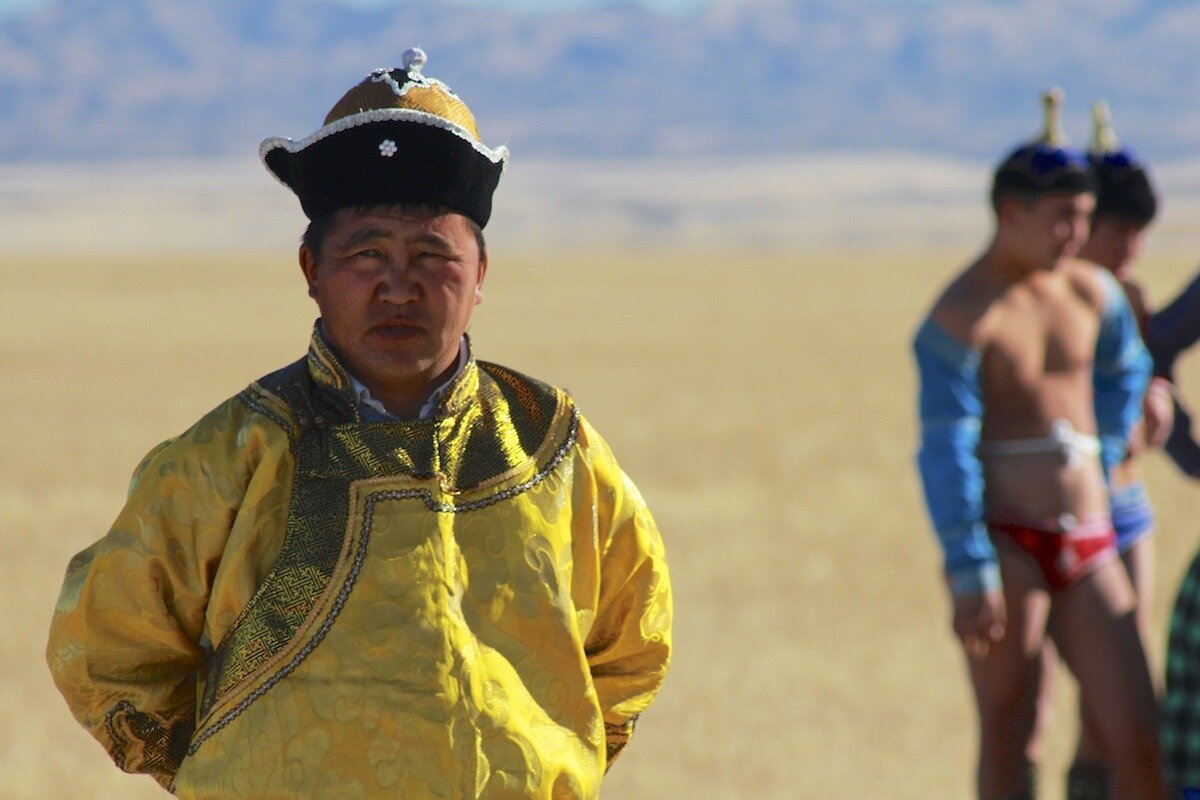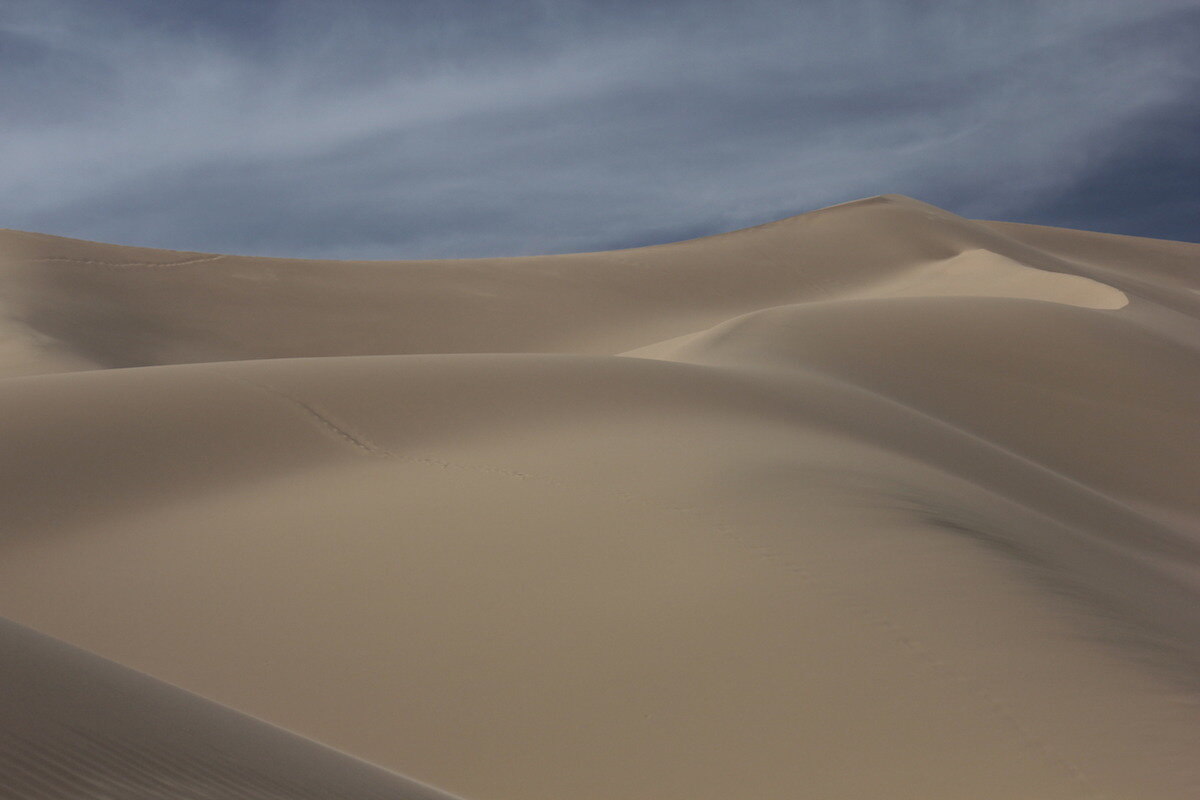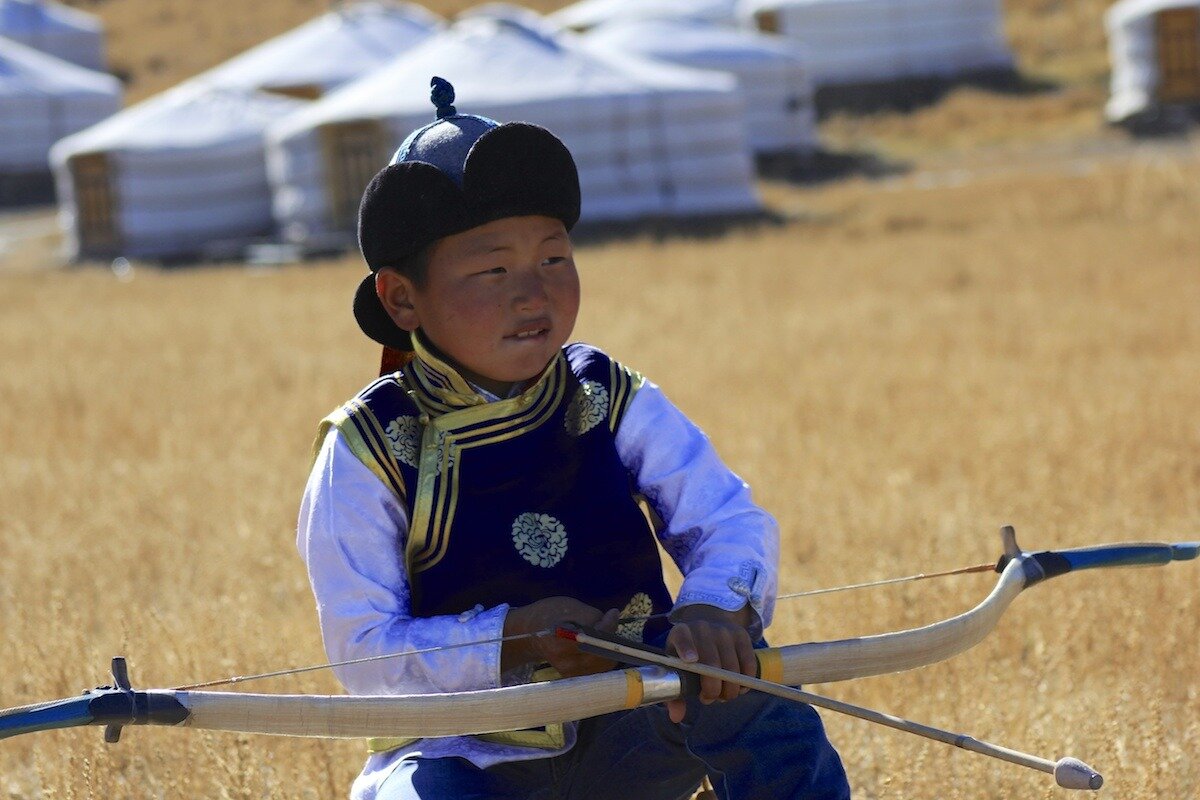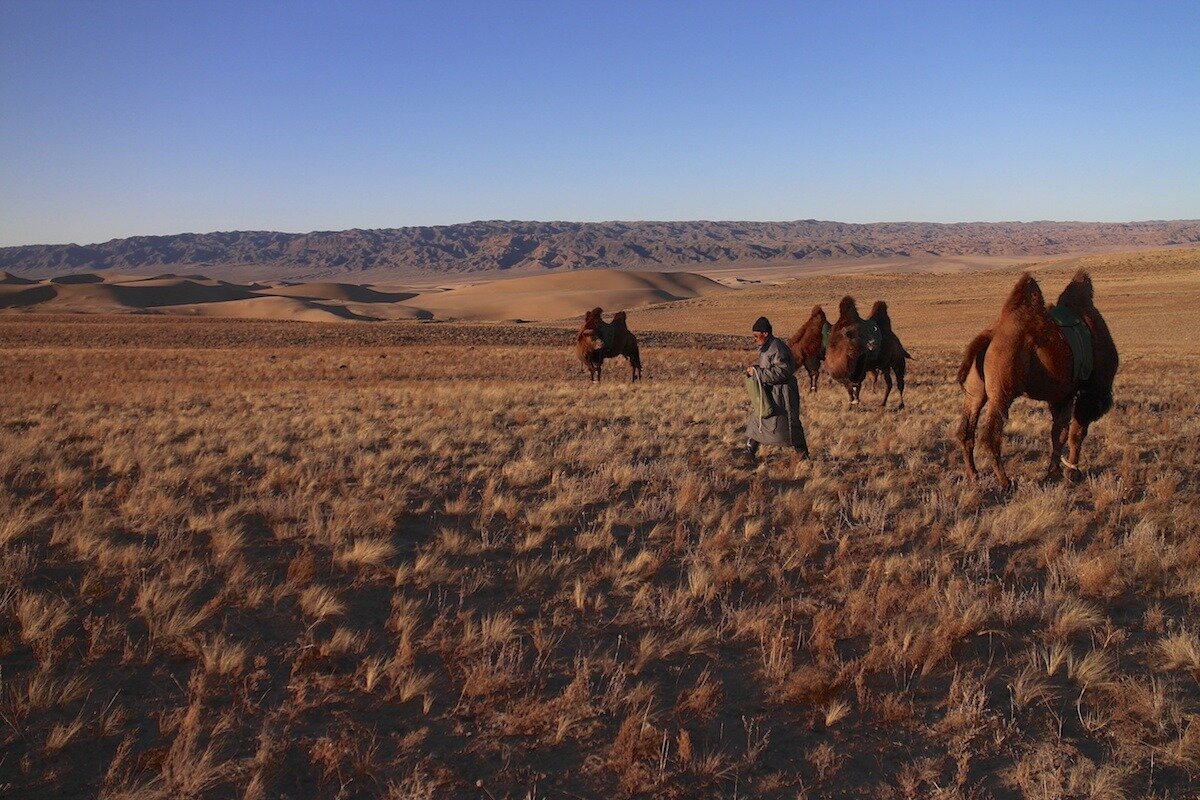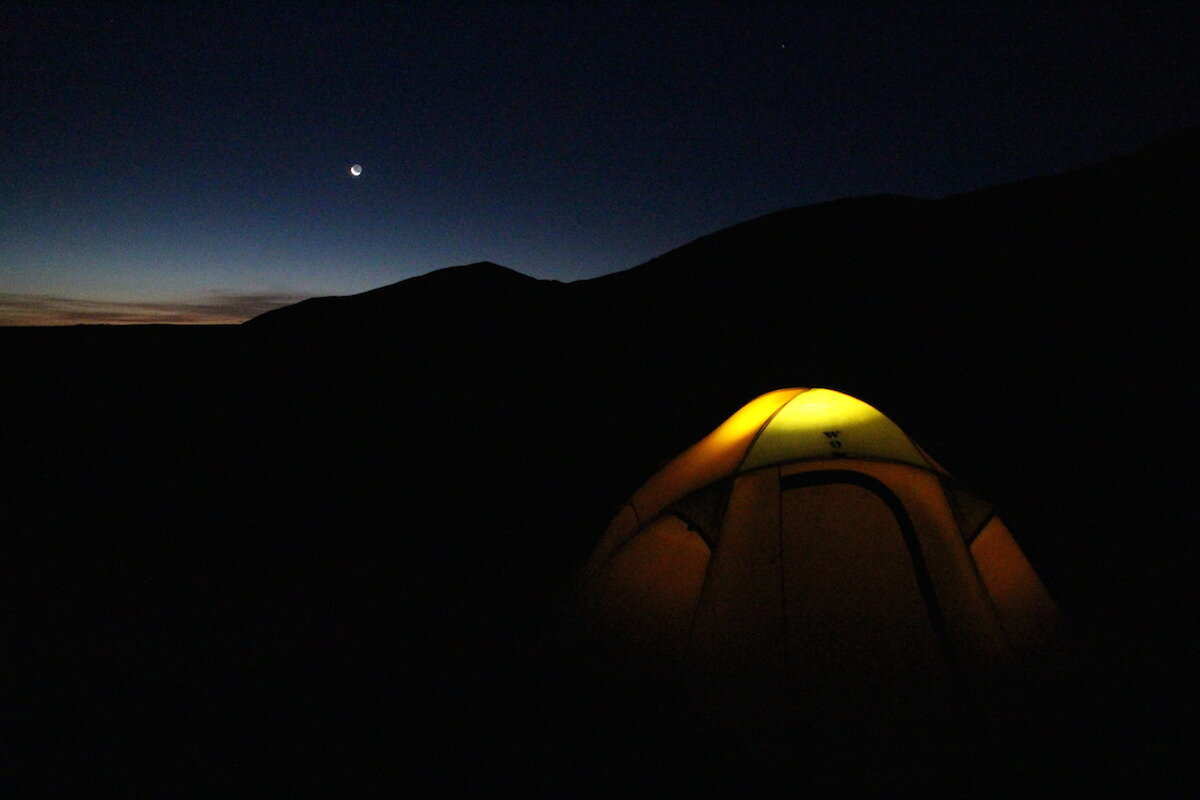Mongolia Safari
Naadam, Golden Eagle Festival and Rugged Mountain Culture
Travel in Mongolia
“Global nomads find travel in Mongolia one of the world’s final frontiers: a place that feels untouched by time, and remains unspoiled by humankind. A mysterious land of rugged natural wonder and remote mountain culture, visitors to Mongolia have access to some of the most authentic sights, sounds and experiences on the planet today. Ride side-by-side with Kazakh horsemen during the annual Golden Eagle Festival, or witness history in action as a bystander at the traditional Naadam games. Steer a camel through the desert or sleep under the stars in a traditional ger. Watch wild horses, reindeer and snow leopards roam free against a multitude of awe-inspiring landscapes—from the sand dunes of the Gobi Desert to the snow-capped Altai Mountains. With about 250 sunny days per year and a blue sky that stretches on forever, Mongolia is a dream destination for travelers who prefer their adventures completely untamed, and totally untouched by the modern world.”
WHAT WE LOVE
Traditional Games of Naadam: Wrestling, archery and horse racing are just part of the revelry at the annual Naadam Festival, which is celebrated each July throughout Mongolia, with smaller festivals taking place throughout the year. This event has its roots in Mongolia’s military history, as warriors were chosen based on their prowess in the three disciplines. The festival became a national celebration in the 1920s when Mongolia gained its independence, and those who travel to Mongolia today can enjoy a colorful parade of traditional costumes, pageantry and competitive contests.
Ride with Kazakh Horsemen: Join Kazakh nomads on a thrilling adventure as they hunt small animals with trained golden eagles in the mountains of western Mongolia. You’ll ride side-by-side with them on horseback throughout the hunt—an incredible vantage point from which to partake in this authentic cultural pursuit. Travel in October and you’ll also have the chance to watch the horsemen—decked out in their finest traditional garb—compete and earn honors at the Golden Eagle Festival, which tests their agility, riding skills and eagle-handling expertise.
Watch Wild Horses Roam: The rugged outback of Hustai Nuruu National Park is home to the takhi, one of the last species of wild horse. The world’s largest herd lives in the park, along with a wide range of other regional mammal life—roe deer, mongolian gazelle, grey wolves and red fox—and over 400 species of birdlife. Park rangers and biologists are on hand for guided tours, and can offer a specialist’s insight into the history of the takhi, as the efforts that are underway to protect the species and its natural habitat.
Track Snow Leopards: The snow leopard is one of nature’s most elusive creatures, and catching a glimpse of one in its natural habitat is one of the world’s greatest wildlife challenges. Travel to Mongolia to join Mongolian field biologists on an excursion to a remote region of the Altai Mountains that will cover the known habitats of these legendary Himalayan cats. Your days will consist of challenging hikes through highly-untrekked terrain, and your evenings will consist of dinner and an overnight with a host family from a local nomadic tribe—who just may share their own tales about encounters with the snow leopard.
Explore the Gobi Desert on Camel: The vast Gobi Desert consists of a half-million acres across inner Mongolia, with an otherworldly landscape of massive crimson dunes that seemingly stretch to the end of the world. The best way to explore this ethereal terrain is on camelback, and the sure-footed two-humped creature is your constant companion on this unforgettable journey across the flaming sand, leading to the picturesque grassy oasis of the Ayaldai valley, where both you and your camel can enjoy a hard won rest.
Hear the Singing Sands: Along the Gobi Alti Mountain range stretch the mysterious sand dunes of Hongoryn Els, which run more than 100 miles and can reach up to 600 feet—an almost extragalactic atmosphere, ideal for inspiring some amazing photo ops! Climb to the tip of the magnificent peaks, where the only sound you will hear is the distinctive echo of the wind sweeping over the ridges of sand. The experience is beyond otherworldly: you will feel as though you’ve been transported to another universe entirely.
Hunt for Fossils at the Flaming Cliffs: Also in the Gobi Desert you will encounter the famous flaming red sandstone cliffs that turn a brilliant hue at sunrise and sunset, creating a beacon for budding paleontologists and romantics. The first dinosaur eggs were discovered here in 1923, and the area today still yields significant fossil finds.
Get Close to Rare Wildlife: The Gun-Galuut Nature Reserve in East Central Mongolia encompasses a wide range of ecosystems—mountains, lakes, rivers, steppe and wetlands—making it the most diverse protected area in the country. The Reserve is also home to a number of endangered or threatened species, including the notoriously shy argali sheep, white-naped crane, red falcon and black vulture. Tours can be arranged on foot or horseback with biologists experienced in tracking these and other animals native to the land, and opportunities abound for amazing wildlife sightings you won’t find anywhere else in the world.
On the Trail of Genghis Khan: Hop on a horse and travel the historic path of Genghis Khan in Mongolia. Cross the sands of the Gobi Desert and trot through endless grassy steppe in the hoof prints of the famed 13th century warrior and his nomadic army. Tours can also be arranged to visit historic sites along the way, ride with traditional Mongolian saddles and gear, or stay with a nomadic family who will house you, feed you and share local lore. The journey is truly one of the most spectacular you will ever experience.
Enjoy Mongolian Hospitality: Travelling in Mongolia also offers the gift of access to one of the last remaining horse-based nomadic cultures in the world. Many Mongolians today continue to follow age-old norms of hospitality traditions, which include spontaneously and warmly welcoming visitors into their homes. Make time to stop during your hikes or horse treks to visit nomadic families in their traditional gers, and enjoy this rare chance to learn more about a way of life that has changed little in centuries, directly from those who still live it.
REST & REJUVENATE
Three Camel Lodge: Three Camel Lodge is designed to offer a bona fide nomadic experience, in the heart of the mesmerizing and ruggedly romantic landscape of the Gobi desert. Your bedroom will be an traditional ger, fitted to feature a king-size bed, wood stove and a host of authentic, locally-produced amenities. The Lodge is also run according to the highest standards of sustainability, conservation and organic design. The entire property is run by solar and wind power, and also serves as a base for scientific and wildlife monitoring, along with working closely on greenhouse and recycling projects with local farmers.
Ger Camps: Most lodging in Mongolia is comprised of gers—traditional structures made from wood lattice, and covered in felt and canvas. Mongolian gers are easily built and disassembled to accommodate a nomadic lifestyle, travelers to Mongolia today will encounter ger camps that feature comfortable furnishings and cozy wood burning stoves, along with communal dining and bathroom facilities.
Fly Tent Camping: Imagine sleeping in a tent under the wide open Mongolian sky, with the majestic mountains and sand dunes of the Gobi Desert as a dramatic backdrop. Fly tent camping options are available for travelers who want an adventure that places them closer to nature, and who perhaps wish to experience Mongolia the same way its nomadic populations have for centuries—outside, in the cool dry desert air, with the glow of stars and crimson sand to light the way.
WHAT TO KNOW
Visas are not required for Americans visiting Mongolia for fewer than 90 days.
Mongolia is known as “the land of blue sky,” boasting about 250 sunny days per year.
Mongolia’s climate is known as extreme continental, as it is not influenced by any seas.
Temperatures in Mongolia run the extremes. The winter months of November to mid-April can be bitter cold, while temperatures in the summer can reach up to 100 degrees Fahrenheit .
The best time to visit Mongolia is from May to October when the sun seems to be shining incessantly. The national Naadam Games are in July, though smaller festivals are held throughout the summer, and the Golden Eagle Festival is in October.
MORE ON LUXURY TRAVEL IN ASIA, CULTURAL TOURS & FESTIVALS
Song Saa Private Island and Beaches of Cambodia
India: Luxury Hotels and Tiger Safaris
Luxury Travel in Japan: Ryokans and Timeless Tokyo
Luxury Travel in Dubai: Burj Khalifa and Palm Island
Luang Prabang and Northern Laos
Luxury Travel in Sri Lanka: Galle, Tea Trails and World-Class Diving
Maasai Walking Safari: A Slow Safari Experience
Omo Valley, Ethiopia: Ancient Culture & Tribal Tradition
Top Ten Music Festivals in Africa











